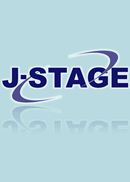All issues

Volume 42 (1988 - 198・・・
- Issue 6 Pages 271-
- Issue 5 Pages 219-
- Issue 4 Pages 155-
- Issue 3 Pages 97-
- Issue 2 Pages 49-
- Issue 1 Pages 3-
Volume 42, Issue 6
Displaying 1-7 of 7 articles from this issue
- |<
- <
- 1
- >
- >|
-
Michio ARAKI1989Volume 42Issue 6 Pages 271-278
Published: 1989
Released on J-STAGE: February 19, 2013
JOURNAL FREE ACCESSDownload PDF (5791K) -
Norio TAKAGI, Takahiro HIROTSU, Jitsuo SAKAKIBARA, Shunsaku KATOH, Kaz ...1989Volume 42Issue 6 Pages 279-283
Published: 1989
Released on J-STAGE: February 19, 2013
JOURNAL FREE ACCESSA fibrous adsorbent having amidoxime groups was prepared from a composite fiber consistingof two different poly (acrylonitrile), these acrylonitrile contents different from each other.The fibrous adsorbent, derived from reaction of the poly (acrylonitrile) fiber with hydroxylaminefor 8 hours followed by alkali-treatment for 24 hours, exhibited the highest adsorption rate foruranium from seawater: its uranium uptake ability was 10 mg/g in 80 days from seawater. Furthermore, this fibrous adsorbent showed a higher fiber strength than those reported earlier. Therefore, this fibrous adsorbent seems to be promising in the recovery of uranium from seawater.View full abstractDownload PDF (3263K) -
Aijun TONG, Yoshifumi AKAMA, Shigeyuki TANAKA1989Volume 42Issue 6 Pages 284-288
Published: 1989
Released on J-STAGE: February 19, 2013
JOURNAL FREE ACCESSA method is described for the atomic absorption spectrometric determination of trace amount ofcopper in sodium chloride by extraction of its ammonium pyrrolidinedithiocarbarmate (APDC) complex into methyl isobutyl ketone (MIBK). The traditional dithizone-tetrachloride extractionmethod for the determination of copper in sodium chloride with AAS method was complicated andlacking in sensitivity. Thus we tried to apply the APDC-MIBK and APDC-DIBK (diisobutylketone) extraction AAS method for the determination of copper in sodium chloride.
The proposed procedure is as follows. To about 10-20 g of sodium chloride sample, 10ml ofnitric acid (1+1) and 30-60ml of distilled water are added, then the sample is dissolved byheatingon a hot plate. After cooling, the solution is removed to a 200ml separating funnel. The pH ofthe solution is adjusted to about 4 with ammonia and ammonium citrate by using methyl orangeas the indicator. Five ml of 2% APDC solution and 10 ml of MIBK or DIBK solution are addedand the mixture is shaken for 5 minutes. The organic layer is directly separated and analyzed byAAS.
The method has been successfully used to determine 0.01 ppm copper in sodium chloride samples.When a known amount of copper was added to the sodium chloride samples, satisfactory recoveriesof copper were also obtained. Therefore, this simple method can be used to determine trace amount of copper in sodium chloride samples.View full abstractDownload PDF (3070K) -
Takehiro KOJIMA, Yasumasa SHIGETOMI1989Volume 42Issue 6 Pages 289-292
Published: 1989
Released on J-STAGE: February 19, 2013
JOURNAL FREE ACCESSA batch method was developed for the determination of uranium (VI) in sea water by usingamidoxime resin as an adsorbent. The analytical procedure by standard addition is as follows.Put 5 liters of filtered sea water, 1 cm3 of 5, 7. 5, or 10 ppm uranium (VI), and 2g of the resin (Daia Ion CR-50) into three 5-liter beakers, respectively. Stir for four days. Filter the resin toseparate it from sea water, transfer the resin into a 50cm3 beaker, add 20cm3 of sulfuric acid, and shake it 3h. After filtering off the resin, transfer 10cm3 of the filtrate, 3cm3 of nitric acid, 2cm3 of 5% ascorbic acid, and 2 cm3 of 2% sodium fluoride into a 100-cm3 separatory funnel andextract uranium (VI) with 5 cm3 of TOPO in cyclohexane. After removing the aqueous phaseand washing the organic phase twice with 10-cm3 of the 2 mol dm-3 nitric acid, transfer the organicphase into a 10cm3 volumetric flask and add 1cm3 of the 0.05% 5-Br-PADAP, 0.5 cm3 of 10%TEA, and made up to the mark with ethanol. Allow this to stand for 30 min and measure theabsorbance of the colored solution at 575 nm against the reagent blank. The analytical result was2.8 μg of U (VI) /liter of sea water. Taking into accout the analytical results of other ions suchas sulfate (2.67×10-2mol dm-3), chloride (4.82×10-1 mol dm-3), magnesium (II)(4.33×10-2 mol dm-3), and calcium (II)(8.67×10-3 mol dm-3), it seems that the result is satisfactory.View full abstractDownload PDF (2570K) -
Takehiro KOJIMA, Takayuki SOWA, Yasumasa SHIGETOMI, Yuroku YAMAMOTO1989Volume 42Issue 6 Pages 293-297
Published: 1989
Released on J-STAGE: February 19, 2013
JOURNAL FREE ACCESSA batch method was developed for the determination of copper (II) in sea water by using cellulosetriacetate (TAC) containing 2-hydroxyphenylethylketone oxime (HPEKO), which were synthesizedfrom 2-hydroxyphenylethylketone and hydroxy ammonium chloride, as an adsorbent. Theanalytical procedure by standard addition is as follows. Place 1 liter of filtered sea water, 1ml of2.5, 5.0, or 7.5 ppm, copper (II), and 2g of the HPEKO-TAC powder into three 1-liter beakers, respectively. Stir for 20h, filter the adsorbent to separate it from sea water, transfer the adsorbentinto a 100ml Erlenmeyer flask, add 20 ml of 0.5M hydrochloric acid and shake it 30 min. Afterfiltering off the adsorbent, transfer 20ml of the filtrate into a 25ml beaker, evaporate on a hotplate. After cooling to room temperature, place 2ml of O.1% (w/v) bathocuproine disulfonic aciddisodium, 1ml of 10% (w/v) hydroxyammonium chloride and 1ml of 30% (w/v) ammonium citrate, tribasic solution into the beaker. Transfer the solution into a 10ml volumetric flask and dilutethe solution to the mark with water. Shake well and measure the absorbance of the solution witha 1cm glass cell at 478nm against a reagent blank. The analytical result was 2.2±0.27 μg of Cu (II) /liter of sea water.View full abstractDownload PDF (3601K) -
Ken TOYOKURA, Masaaki YOKOTA1989Volume 42Issue 6 Pages 298-304
Published: 1989
Released on J-STAGE: February 19, 2013
JOURNAL FREE ACCESSDownload PDF (5301K) -
Report from Members of First Overseas Training in Salt IndustrySadao MASUYAMA1989Volume 42Issue 6 Pages 305-308
Published: 1989
Released on J-STAGE: February 19, 2013
JOURNAL FREE ACCESSDownload PDF (2951K)
- |<
- <
- 1
- >
- >|